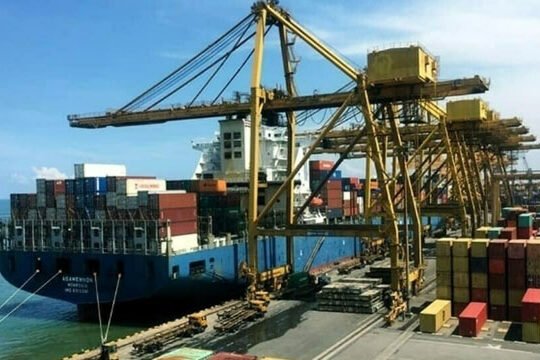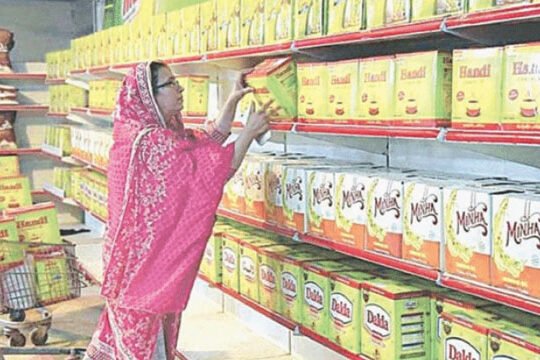The textile industry in Pakistan is facing a severe crisis as cotton production in Punjab and Sindh plummets by up to 60% by August 31, forcing the sector to depend on expensive imports from foreign markets and straining the country’s foreign exchange reserves.
Conflicting Data Sparks Uncertainty
A significant discrepancy of over 0.3 million bales between the figures released by Punjab’s Crop Reporting Service (CRS) and the Pakistan Cotton Ginners Association (PCGA) has left the industry puzzled, complicating future procurement strategies. According to PCGA data, approximately 1.226 million bales reached ginning factories across the country by August 31, marking a steep 60% decline compared to 3.04 million bales produced during the same period last year.
In contrast, Punjab CRS reported a harvest of 0.759 million bales, over 30% less than the previous year’s production. CRS Director-General Dr. Abdul Qayyum explained that his agency calculates production at the farm level based on the size of cotton bolls and the picking ratio. He noted a slight increase in boll weight from 3.29 grams last year to 3.34 grams this season, a 1.52% rise. Additionally, only 46% of the crop area has been picked so far, compared to 63% last year at the same time.
Causes of the Production Shortfall
The sharp decline in cotton output is attributed to a combination of adverse factors:
- Delayed Sowing: A significant reduction in early sowing trends has affected crop yields.
- Prolonged Heatwaves: Extended periods of high temperatures during June and July led to fruit shedding.
- Heavy Rains: August experienced heavy rainfall, further damaging the crop.
- Pest Infestations: Whitefly and pink bollworm attacks have severely impacted cotton plants.
- Reduced Crop Acreage: Shrinking areas dedicated to cotton cultivation have limited overall production.
- Market Manipulation: Vested interests manipulating the cotton market have disrupted normal trading patterns.
- Decreasing Crop Profitability: Lower profitability has discouraged farmers from investing in cotton cultivation.
- Lack of Government Support: Insufficient support for research and development has hindered efforts to improve crop resilience and yields.
Industry Reactions and Implications
The PCGA report highlights that Sindh produced 0.773 million bales this year, a 61% drop from last year’s 1.972 million bales for the same period. Similarly, Punjab saw its ginned bales fall by 58%, reaching 0.453 million compared to 1.068 million bales last year.
Sajid Mahmood from the Central Cotton Research Institute attributed the continuous decline in cotton output and yield since 2016 to inadequate funding for R&D aimed at developing new crop varieties capable of withstanding climate change impacts. He criticized the lack of support from both the textile industry and the government for the Pakistan Central Cotton Committee, stating that this has severely hampered research and development efforts, thereby affecting the textile industry and the national economy.
A cotton ginner also pointed to under-invoicing and undocumented business practices by some ginning units, allegedly due to heavy taxation on the sector, as key reasons behind the unusual decline in lint production and the discrepancy between PCGA and CRS data.
Impact on Imports and Market Dynamics
Ihsanul Haq, chairman of the Cotton Ginners Forum, noted that the recent heavy rains have not only reduced the quantity of the cotton crop but also its quality. This deterioration has forced textile millers to turn to lint imports, with purchases reaching 1.171 million bales so far this year compared to 2.615 million bales in the same period last year.
Karachi Cotton Brokers Forum chairman Naseem Usman added that Pakistani spinners have secured import deals for 1.6 million bales and are negotiating additional agreements to address the shortfall in local cotton output and quality.
Economic and Strategic Concerns
The stark decline in cotton production poses significant economic challenges for Pakistan’s textile sector, which is a cornerstone of the country’s economy. The reliance on imports not only increases costs but also puts additional pressure on the nation’s foreign exchange reserves. The inconsistency in data reporting between PCGA and CRS further complicates strategic planning and decision-making for stakeholders across the industry.
Call for Coordinated Action
Experts and industry leaders are calling for immediate and coordinated efforts to address the underlying issues contributing to the decline in cotton production. Key recommendations include:
- Enhanced Government Support: Increased funding and support for research and development to create climate-resilient cotton varieties.
- Pest Control Measures: Implementing effective pest management strategies to combat whitefly and pink bollworm infestations.
- Market Regulation: Addressing market manipulation and ensuring fair trading practices within the cotton sector.
- Incentives for Farmers: Providing financial incentives and support to improve crop profitability and encourage early sowing.
- Improved Data Coordination: Ensuring consistency and accuracy in crop reporting between different agencies to aid in effective decision-making.
The dramatic decline in cotton production in Punjab and Sindh underscores the urgent need for comprehensive measures to stabilize and enhance the sector. Addressing the multifaceted challenges—ranging from environmental factors to market dynamics and insufficient government support—is crucial for reviving Pakistan’s cotton industry and safeguarding its vital textile sector. The industry’s ability to adapt and respond to these challenges will determine the future trajectory of Pakistan’s economic stability and growth.












